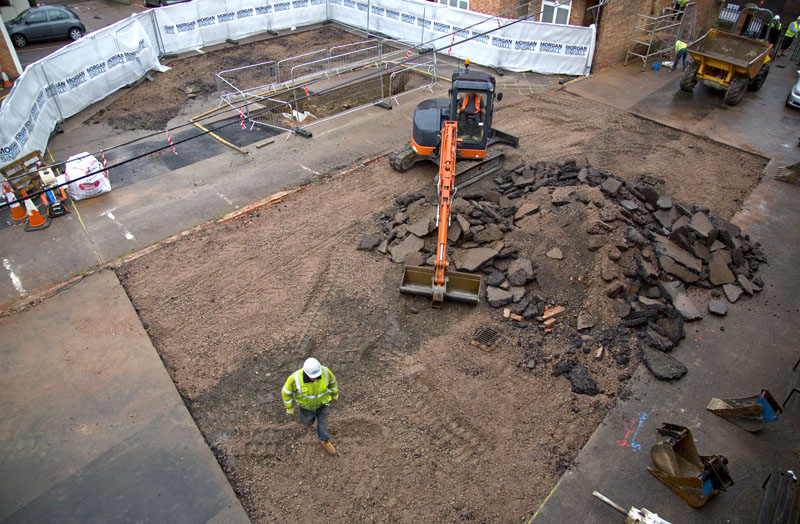The team from University of Leicester Archaeological Services hope the new dig may help to uncover:
- More details about Richard III’s burial and its place within the Grey Friars church
- A much clearer picture of the church’s layout, dimensions and architecture
- Other burials in the church – including a stone coffin found during the initial dig. The team have speculated that this could contain one of the founders of the friary - or a medieval knight who may have been mayor of Leicester
- The remains of a group of friars who were beheaded by Henry IV in the early 15th century
The team will make a large trench measuring 25 meters by 17 meters around the area where Richard’s skeleton was found. They hope this will uncover the whole north east end of the church – including the choir area and the walking place around the main tower of the building.
The trench will run between Leicester City Council’s Grey Friars car park and the neighboring car park of the former Alderman Newton School. The team have secured permission to remove part of the Victorian wall separating the two areas.
The team have temporarily sealed Richard III’s burial place in order to protect it from the digging work during the excavation. During the first week, they hope to use machinery to remove the modern surface material, and over the following weeks they plan to use careful hand excavation to unearth the medieval building and its contents.

The most interesting parking lot in England. Credit: University of Leicester.
One of the key findings from the previous dig which they hope to investigate further is a 600-year-old stone coffin that should contain a high status burial. The coffin may belong to a medieval knight called Sir William Moton, who is believed to have been buried at the site in 1362. Alternatively, it could belong to one of the friary’s founders - Peter Swynsfeld, who died in 1272, or William of Nottingham, who died in 1330.
The team found evidence for another five graves during the previous dig, which they hope to examine in more detail this time. In addition, the team will be on the lookout for any proof of the long-standing - and morbid – myth about a group of headless friars who may be buried at the site.
The story suggests that, in 1402, a group of Leicester grey friars had subscribed to the rumor that the deposed King Richard II was still alive – and were providing money for rebels who aimed to topple his successor, Henry IV. Henry IV summoned them to London, and promptly hanged them for treason. Their severed heads were put on London Bridge, and their headless bodies were brought back to Leicester.
It is possible – though not certain – that the friars were buried at the Grey Friars church, more than 80 years before Richard III was buried at the site.
Richard Buckley, lead archaeologist, said, “We hope this dig will expand the context of Richard III’s grave. We also want to preserve the grave’s relationship with the rest of the site. We want to leave some evidence of later activities on the site – including how close it was to the Victorian outhouse.
“What drives us with the project is learning more about medieval Leicester and one of its great religious houses. We hope this dig is going to give us a definitive plan of the dimensions and architecture of the church. We may be able to recover more fragments. We might learn more about the dissolution of the church, and we might learn more about what was there before the friary.”
A viewing platform will be built in the playground of the former Alderman Newton School, which is accessed from St Martins. This will allow visitors to view the archaeological dig in progress from the second week of July onwards.
Leading UK construction and infrastructure company Morgan Sindall is currently on site constructing a King Richard III Visitor Centre to showcase some of the finds from the site. Morgan Sindall is working with the archaeological team to enable access to the site whilst building work continues.




Comments